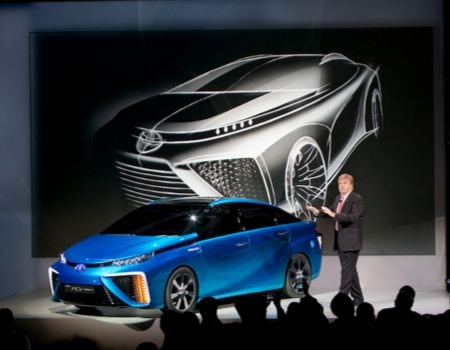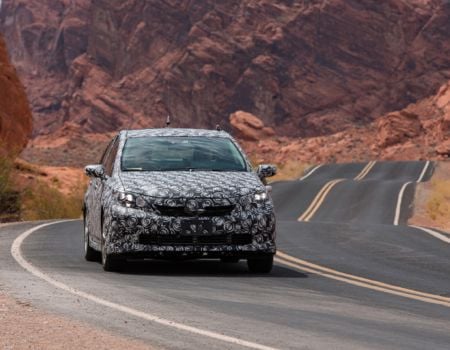Detroit is not the only venue that sees significant automotive announcements in January. Increasingly, automakers are using the global audiences at the Consumer Electronics Show in Las Vegas to debut not only the latest in technology but the future of transportation as well. Case in point is Toyota’s FCV (Fuel Cell Vehicle) concept and prototype hydrogen test vehicle.
Toyota introduced the duo at CES this week while making the bold announcement it would have a hydrogen fuel cell vehicle on the market in 2015.
Hydrogen works beautifully with oxygen to create water and electricity and nothing more, said said Bob Carter, senior vice president of automotive operations for Toyota Motor Sales (TMS), U.S.A. Inc., at the opening of CES, the world’s largest trade show. For years, the use of hydrogen gas to power an electric vehicle has been seen by many smart people as a foolish quest. Yes, there are significant challenges. The first is building the vehicle at a reasonable price for many people. The second is doing what we can to help kick-start the construction of convenient hydrogen refueling infrastructure. We’re doing a good job with both and we will launch in 2015.
Carter showed two vehicles during his press conference in Las Vegas, a radiant blue FCV concept in four-door midsize sedan form alongside the camouflage-taped working “mule” that has been road testing in North America for more than a year in both extreme heat and cold conditions.
Toyota is already boasting a 300-mile range from its prototype along with 0-60 mph performance times of 10 seconds and all done with no emissions other than water vapor. Engineers state refueling the vehicle’s hydrogen tanks takes three to five minutes.
Infrastructure is another issue Toyota is currently addressing as hydrogen fueling stations are extremely limited in number. The automaker is initially focusing on California where the vehicle will first be launched and has partnered with the University of California Irvine’s Advanced Power and Energy Program to assist with mapping out potential locations for new fueling stations. A new model has been drawn up that plots 68 sites to service an estimated 10,000 vehicles with the first 20 to be built by 2015.
We aren’t trying to re-invent the wheel, said Carter. Just everything necessary to make them turn.


